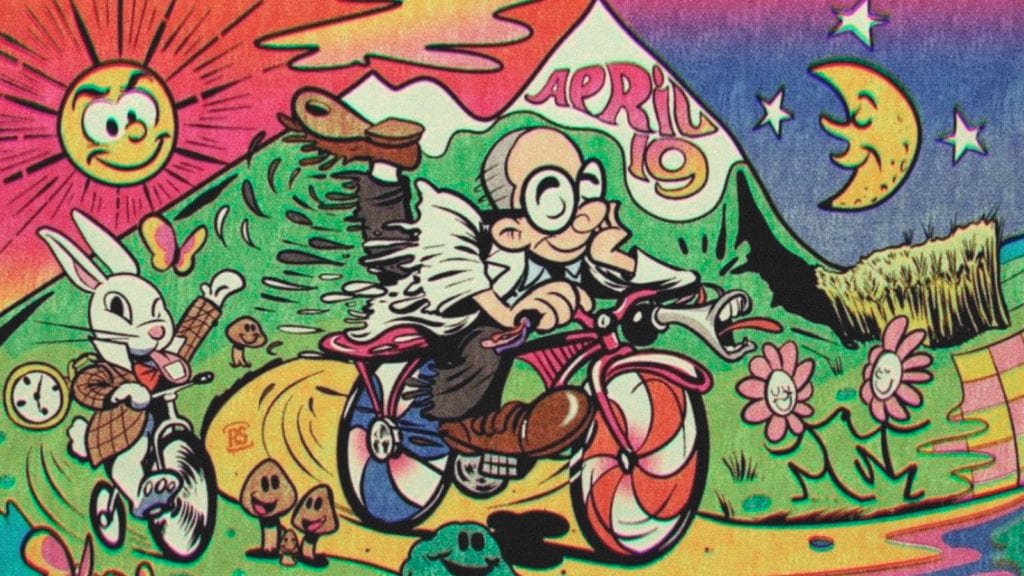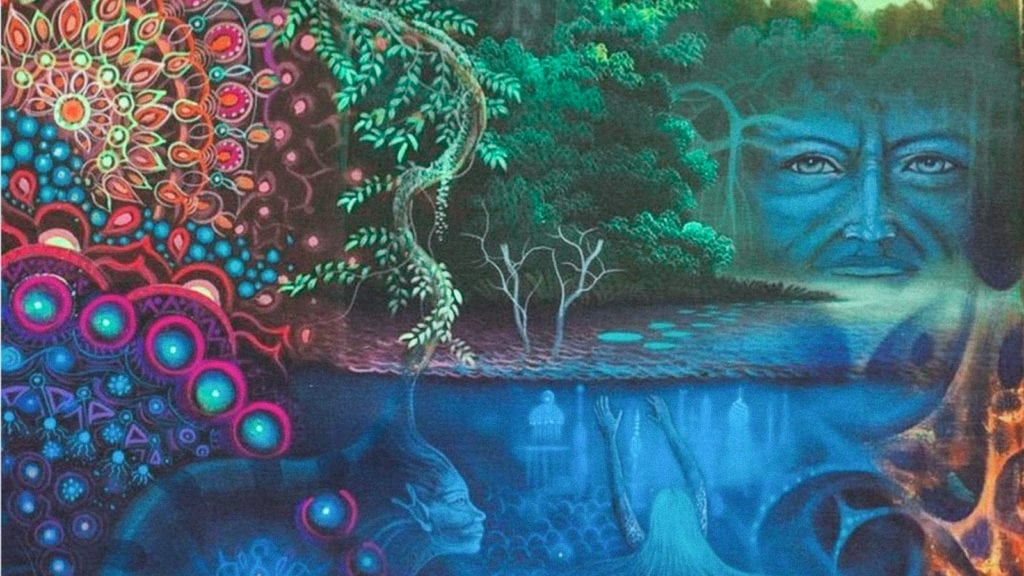-
What are the main differences between magic mushrooms, ayahuasca, LSD, and mescaline?
The main difference between these psychedelic substances is the active compound. Though the active compounds affect similar neurotransmitters, they all vary slightly in effects on the brain and subjective experience.
-
Are any of them dangerous?
No - one of the common threads between psychedelic substances is that they show no toxic effects to any organ of the body.
-
How are these psychedelics used in clinical settings?
It's still unclear how to use the different psychedelic substances in different clinical disorders, but psychedelics are being researched for their potential to treat PTSD, depression, traumatic brain injuries, and addiction.
It’s all too easy to think of all the different psychedelic substances as the same thing, but they are all fundamentally different. The word “psychedelic” is just an umbrella term for a subset of effects that a drug has on a person. It’s the same as how there are many different kinds of “stimulant” drugs, and the same way there are many different kinds of “sedative” drugs. Basically, psychedelics make you trip balls.
Magic mushrooms, Ayahuasca, LSD and mescaline are all psychedelic substances. Yes, they all make you trip balls. But they all compromise completely different compounds, all with different pharmacological actions, and all with their own unique, varying effects. And so while all psychedelics make you trip, there is a difference between magic mushrooms, ayahuasca, LSD and mescaline.
Those who have tried more than one of these psychedelic substances will intuitively know the subtleties between their effects. Some people describe LSD as an energetic psychedelic experience while Ayahuasca is more dreamy and more physically debilitating. But we won’t talk too much about those differences — we’re more focused on the different compounds and their different pharmacological effects.
It’s really hard to quantify the psychedelic experience — to say that magic mushrooms are more physical than LSD or to say that mescaline has more visuals than magic mushrooms. This is because no two psychedelic experiences are ever the same, even if you’re using the same substance. One day, your mushroom dose is completely physical, emotional, and visual, while on another day the same dose is purely mental. The subjective experience has a lot more to do with the set and setting than the substance chosen, but the biological effects remain the same. The biological differences between magic mushrooms, ayahuasca, LSD, and mescaline are the ones we’re more interested in today.
Let’s check them out, one by one.
The magic mushroom.

The magic mushroom is, quite literally, a mushroom. There are hundreds of different species of psychedelic, active mushrooms. The most common is Psilocybe cubensis, but there are many other species within the Psilocybe genus such as Psilocybe cyanescens and Psilocybe semilanceata. Other genera of magic mushroom exist such as the Amanita muscaria mushroom, which has a completely different chemical make-up all together. For the purpose of keeping this article on topic, we’re just going to look at the Psilocybe genus of magic mushrooms.
The magic mushroom chemical profile.
Psilocybe magic mushrooms contain three main active compounds: psilocybin, psilocin, and baeocystin. These are the compounds thought to be responsible for the psychedelic effect of magic mushrooms.
The molecular formula for psilocybin is C12H17N204P.
Pharmacokinetics of psilocybin.
When psilocybin first enters the body, it is metabolised by the liver into psilocin. This occurs via a process of dephosphorylation. Psilocin easily crosses the blood brain barrier. By the way, this is why mushrooms with higher amounts of psilocin are considered to be “stronger”. Less work is required to dephosphorylate psilocybin into psilocin, and it therefore crosses the blood brain barrier faster.
Psilocin is structurally very similar to tryptamine, a metabolite of a common nutrient called tryptophan. This gives psilocin a strong affinity for the human brain’s serotonin receptors, causing a cascade of effects that are associated with inhibition of serotonin-dependent neurons.
Interestingly, psilocin doesn’t have too much of an effect on dopamine receptors, but as you’ll later find out, there are other psychedelic compounds which love dopamine receptors.
The effects of magic mushrooms.
The subjective effects of magic mushrooms range from visual effects, disorientation, dizziness, hallucinations, divergent thinking, and physical sensations. However, these are the same terms used to describe pretty much every psychedelic experience, irrespective of the substance. Those who have tried multiple different kinds will know the subtle differences in sensation, visual effects, etc.
The effects of magic mushrooms last anywhere from 3 - 10 hours depending on the dose and the person taking them. Compared to lots of other psychedelics, this is actually a short “high” and something that mushroom users love.
From a biological perspective, psilocybin is interesting because it is not known to affect any organs (heart, kidneys, intestines). Essentially, psilocybin enters the brain via the blood brain barrier, does all of its work on serotonin receptors, and is then excreted in urine. It doesn’t touch or affect any of the physical organs.
LSD; lysergic acid diethylamide.

LSD is a synthetic psychedelic compound. It originated as LSA (lysergic acid amide), which was extracted from ergot, a fungus that grows on rye and other grains. Albert Hofman used LSA to create LSD in 1938. For a brief period of time, it was used as an experimental mind control drug and researchers dabbled in LSD’s effects on different mental health afflictions.
LSD’s “original” form, LSA, is still used today, but is typically consumed via a plant called Hawaiian Baby Woodrose. The seeds of Hawaiian Baby Woodrose contain large amounts of LSA and so people still consume this plant, but its effects are considered mild in comparison with LSD.
We don’t really need to talk about the chemical profile of LSD because LSD is the chemical in question. But let’s check out its pharmacokinetics and how it works.
LSD pharmacokinetics.
LSD has pharmacological activity at a number of different serotonin receptors, all dopamine and norepinephrine receptors. This makes LSD unique, as most of the psychedelics that work through the serotonergic system steer clear of the dopaminergic system.
LSD has a whopping 5.1 hr half life, making it one of the longest lasting psychoactive substances. A journey can last up to 20 hours and LSD’s bioavailability is somewhere around 70%. Most LSD consumed is metabolised, with its metabolite being excreted through urine. It binds strongly to serotonin receptors and for a long time, another reason why its resident time feels so long for the user.
The effects of LSD.
Like we mentioned, LSD has long lasting effects — anywhere from 6 to 20 hours. The effects start somewhere between 30-90 minutes after consumption, and the effects can start as anything from slight changes in perception to full blown cognitive change.
Virtually everything about sensory experience can change under the effects of LSD, from the way things look and feel to the way foods taste. Many people report synesthesia on LSD, a phenomenon of overlapping senses whereby a person can taste colours, for example. It’s thought that serotonergic activity is behind this phenomenon, which means it occurs with other psychedelics too.
Like psilocybin, LSD is not known to have harmful effects on any organ, even at high doses. It’s interesting that when it comes to the negative effects of psychedelics, most arise from dangerous activity undertaken while under the effects than any direct negative effect from the drug. This is the case with LSD, too.
Ayahuasca brew.

Ayahuasca is the name of a decoction made with two plants: Banisteriopsis caapi (Ayahuasca) and Psychotria viridis (Chacruna). It’s sometimes made with different plant species in different parts of the world because of bioavailability, but those other plant species are used because they contain the same compounds. Nonetheless, the Ayahuasca brew is traditionally made with these two species.
The reason this brew is so very interesting is because without Ayahausca, chacruna doesn’t work. They need each other like a lock and a key. In this way, the brew is actually a very clever way of bypassing the body’s defense mechanisms by introducing a second plant. This recipe was created thousands of years ago by traditional peoples of the Amazon, long before we had any scientific knowledge of enzymes and neurotransmitters.
Ayahuasca’s chemical profile.
There are two main active chemicals that form the Ayahuasca brew. From the Banisteriopsis caapi vine come harmala alkaloids, a form of monoamine oxidase inhibitor (MAOI). From the Psychotria viridis (chacruna) leaf comes N-N-dimethyltryptamine (DMT).
Though the MAOI is psychoactive in its own right, it’s not actually the most psychoactive part of the brew. It’s the DMT that makes the brew so potently psychedelic. Under normal gastric circumstances, DMT would degrade on impact in the gastrointestinal tract because of enzymes called monoamine oxidases. But thanks to the MAOI in the Banisteriopsis caapi vine, those enzymes are inhibited and DMT can get to work.
Ayahuasca pharmacokinetics.
Ayahuasca, as a psychedelic, again strongly affects serotonergic systems. Because of its MAOI effect, it causes a large amount of serotonin to be moving through the body. This is why it’s dangerous to use Ayahuasca while taking antidepressants — serotonin syndrome is deadly.
Ayahuasca takes anywhere between 1 and 2 hours to take effects, and lasts for around 4-6 hours. WIthin 30 minutes of consumption, however, it starts to cause physical sensations such as nausea and vomiting as well as diarrhoea. Interestingly, this isn’t because of a “poison” effect, it’s simply a result of vagus nerve stimulation by increased levels of serotonin in the brain. Diarrhoea might be caused by increased serotonin stimulation in the gut.
The effects of ayahuasca.
Because of the magic concoction that is Ayahuasca, it’s literally like a shot of serotonin to the brain. Its physical effects are so strong, most people feel nausea and vomit and some people experience diarrhoea. Some people are completely physically incapacitated during an Ayahuasca experience.
Despite its potent physical effects, Ayahuasca isn’t known to have any toxic effect on hepatic function or renal function. Interestingly, and very much unlike other psychedelics, that doesn’t mean Ayahuasca consumption isn’t dangerous. There can be fatal reactions if consumed with other substances that work through the serotonergic system because too much serotonin is deadly.
Like other psychedelics, Ayahuasca causes strong visions, but many people associate these visions and hallucinations with an “entity”. It has also been given this persona through its traditional and spiritual use.
Mescaline; the cactus compound.

Mescaline is a compound typically extracted from the Peyote or San Pedro cactus, but can also be found in the Peruvian Torch cactus, Cactaceae species and even some Fabaceae bean species. In traditional contexts, it’s drunk as a cactus brew, but synthetic versions of mescaline exist. We’re not talking about those as their effects are different and they have different chemical structures.
Mescaline pharmacokinetics.
Like all of the other psychedelic substances we’ve spoken about in this article, mescaline works primarily through serotonergic systems. It has a strong affinity for the 5HT2 receptor, and it’s thought that through this activity, mescaline exerts its psychedelic effects.
Again, mescaline can cause nausea and vomiting, just like Ayahuasca, and for the very same reasons. Excess serotonin stimulation in the brain and gut can cause symptoms of nausea and vomiting.
The effects of mescaline.
Mescaline is no different when it comes to toxicology — though it’s metabolised by the liver, it’s not known to have any toxic effects on any of the physical organs.
Mescaline is most well known for its physical, sensory effects. They are likened to MDMA in terms of how the body feels. Accompanying these sensations are open and closed eye visuals, interesting cerebral activity in terms of thought and revelation, and increased openness.
Traditionally, mescaline was consumed during the day while Ayahuasca was consumed during the night. This seems to tie in with Ayahuasca’s physically debilitating effects compared to mescaline’s, which are more active and energetic.
Common threads between magic mushrooms, LSD, Ayahuasca, and mescaline.

Though each psychedelic substance is made of different compounds, there are definitely some pretty obvious common threads between them. The first and most obvious is that none of them seem to have any toxic effect on physical organs. In fact, other than a raised heartbeat, dilated pupils, and some neurologically originated nausea and vomiting, there are no real physical effects.
Pretty much all fatal effects caused by psychedelics occur as a result of dangerous behaviour undertaken during the experience. Most of the time this can be avoided by abstaining from using psychedelics in inappropriate settings — like in an overcrowded shopping mall for example (or even at a party for some people).
That doesn’t mean there can’t be negative effects. But these negative effects are thought to be psychological in nature. Fear and paranoia can occur during a psychedelic experience, but in most cases these feelings disappear with the end of the experience. Sometimes, a person can even turn that negative experience into a deeply healing one.
There’s still no clear answer on which psychedelics should be used for which kind of therapeutic uses. All of this understanding is still very much in its infancy. However, psychedelics are currently under scrutiny for their use in clinical depression, addiction, anxiety, PTSD, and traumatic brain injuries. Psychedelics like the brain — an organ that we have a very hard time medicating. And psychedelics are a light in all that grey and white matter.
Despite the fact that we use such similar words to describe the effects of different psychedelics, they are different. And if you’ve ever dabbled, you’ll know what we’re talking about. Even magic mushroom strains can differ from each other in the subjective experience. We’re excited about the day that we know even more about the difference between magic mushrooms, LSD, Ayahuasca, and mescaline and how they can be applied in different clinical settings.
Have you ever tried magic mushrooms or any of the other substances in this article? How did it differ from other psychedelic experiences? We’d love to hear from you in the comments!